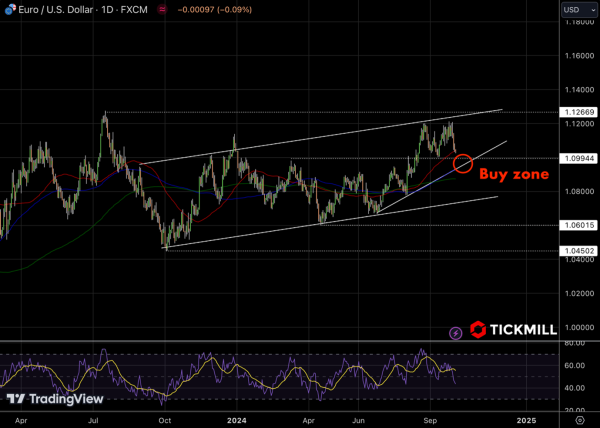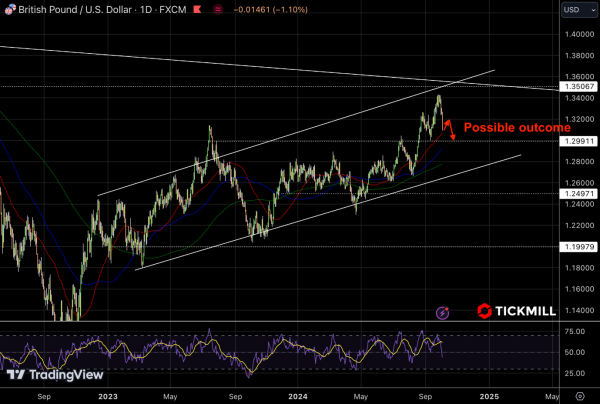Signs of Resilient US Labor Market Bolster Greenback; Fed Seen Opting for Smaller Hike
In times of increased geopolitical instability, the USD has historically benefited from safe-haven inflows, and today is no exception. The ongoing turmoil in the Middle East, particularly the escalating conflict involving Israel, Iran, and their proxies, has heightened risk aversion. Markets are concerned that further escalations, particularly any potential retaliatory strikes on Iranian oil infrastructure, could send shockwaves through global energy markets. This environment is reinforcing the greenback's position as the go-to safe-haven asset, adding upward momentum to the USD.
The US labor market continues to defy expectations of an accelerating economic slowdown, with the JOLTS Job Openings report and ADP private payrolls data both surprising to the upside. JOLTS showed a rise to 8.04 million openings in August, while ADP employment growth in September came in at 142K, well above forecasts. This reinforces the narrative of a resilient US economy, lending more credibility to the old good “soft landing” narrative.
Strong employment data suggests the Federal Reserve will opt for a smaller rate hike at the upcoming meeting (i.e., 25 bp instead of 50 bp). Solid labor market performance obviously reduces the urgency for aggressive easing. This should continue to support USD strength, especially as interest rate differentials remain in favor of the USD compared to the Euro and Japanese Yen.
The Japanese Yen continues to weaken following dovish comments from Japan's new Prime Minister, Shigeru Ishiba, who stated that the economy isn’t ready for another interest rate hike. Coupled with a Bank of Japan that has been committed to ultra-loose monetary policy, the JPY is seeing downward pressure. This reinforces the relative attractiveness of the USD as yield differentials between US and Japanese bonds widen.
The Euro apparently continues to lick its wounds after the blow caused by a dovish miss in the latest inflation report. Recall that it showed that YoY inflation fell to 1.8%, below the ECB 2% target. This is the first time inflation has dipped below the ECB target in over three years, raising the prospect of further monetary easing by the ECB. Market participants are now pricing in a higher likelihood of rate cuts, which could further weaken the Euro.
The Euro’s weakness is likely to persist, as the prospect of accelerating monetary policy easing in the Eurozone discourages capital inflows. In contrast, the Fed’s comparatively hawkish stance makes USD-denominated assets more attractive. The EUR/USD pair remains vulnerable to further downside, especially as macroeconomic data out of the US continues to outperform expectations:

The British Pound is another casualty of diverging central bank policies. Comments from Bank of England head Andrew Bailey have stoked expectations of a rate cut in November, with the market now pricing in a 90% chance of a 25 basis point reduction. The combination of sustained USD strength and dovish BoE sentiment is driving the GBP/USD pair lower.
The path for the GBP looks challenging in the near term. With the BoE poised to cut rates and the Fed’s bias shifting to a less dovish one, the interest rate differential between the UK and US is likely to widen further. This will put additional downward pressure on the GBP, particularly against the USD:

The macroeconomic and geopolitical landscape remains conducive to USD strength. Safe-haven flows, supported by geopolitical tensions in the Middle East, combined with a strong US labor market and divergent monetary policies across major economies, are creating a robust bid for the greenback. The USD will likely remain well-supported in the coming days, particularly as markets brace for Friday’s critical NFP report, which could further reinforce concerns about the Fed stance.